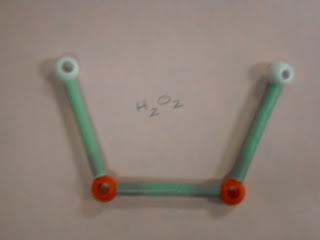What are the polarities of the given solvents?
- The more polar the solvent the more the ink will be pulled up the chromatography paper.
- As the ink is being pulled through the chromatography paper the colors that make up that color are separated out. If the colors are pure they will not separate.
In this experiment we are using water(H2O), Methanol(C3H7OH), Isopropyl(CH3OH), & Hexane(C6H14). Our hypothesis was that water will prove to be most polar, methanol and isopropyl will be less than water but still be effective. Hexane will be the least polar of them all.
Materials:
The 4 Solvents
Inks
Chromatography Paper
Well Plate
Goggles
Apron
Journal(Notes)
Safety Concerns:
Due to the nature of Methane and Hexane you need to be sure that you wear goggles and an apron. Also while working with the solvents makes sure to keep them under the fume hood. Because these fumes are a lung irritant keep your head our from under the fume hood to prevent a head ache. These fumes are a eye irritant that is why the goggles are a necessary precaution. Store the chemicals in proper room. After being dispensed in a well plate put them immediately under the fume hood.
Procedure:
After gathering our materials and putting on our safety equipment we drew three bold black dots on all the pieces of paper and places each one in a different solvent.We had the solvents in four different wells of the well plate and we only had one of each. As we waited we watched the colors being pulled up the paper. We let the paper sit in the solvent for 30 minutes. The next day we picked the best solvent which was water and we used different colored pens to see which color got pulled the farthest and got its colors most separated as it went up the paper. We used the same procedure on each day.
Results:

On the first day we found out that water separated black the better than methane, isopropyl, and Hexane. So the second day we used water as our primary solvent and added colored markers. We used water since it was the best solvent to test which colors separate and which colors are pure. The colors we used were red, purple, green and orange. We found that purple and red are pure colors, and that yellow and orange separated into a mixture of colors.
Conclusion:
Our hypothesis was supported in the results of our experiment. We hypothesized that the most polar solvent would be water, then isopropyl, methane, and the least polar hexane. To make this lab more accurate we could have done the procedure more than once. One weakness in our lab was that the chromatography paper didn't sit in the solvent for exactly 30 minutes.











